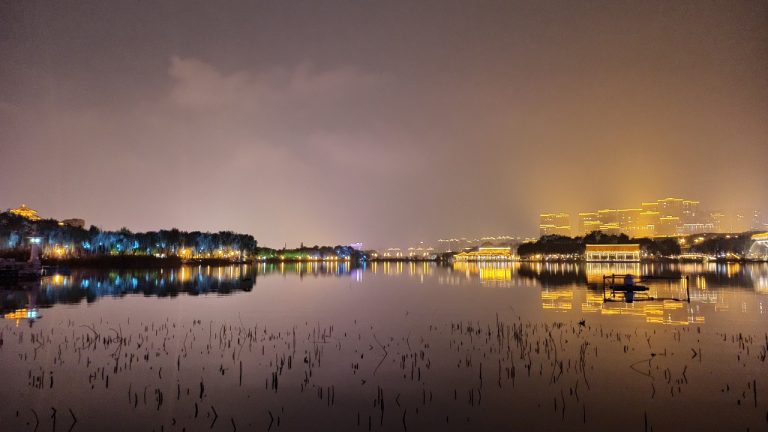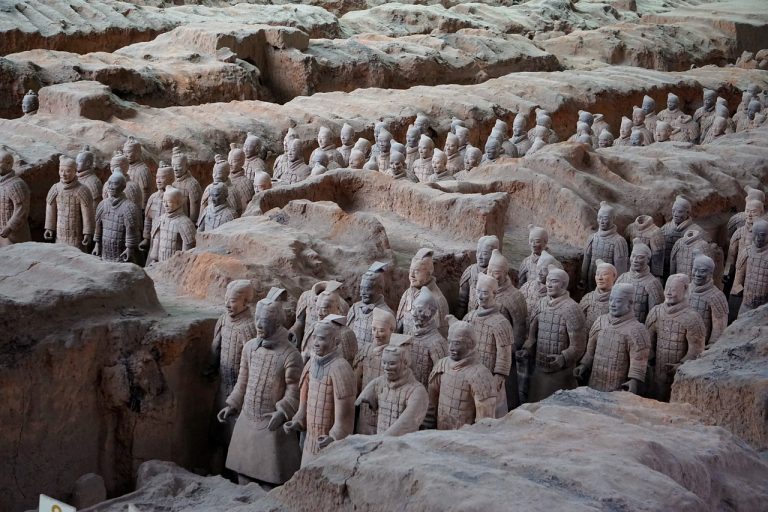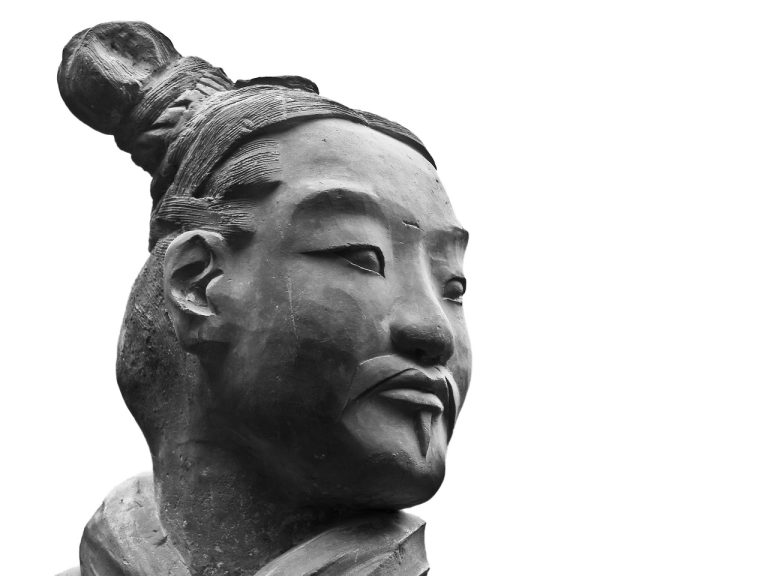Xi’an China Video
Historical Treasures of Xi’an China: Reliving the Past
Xi’an, the capital of China’s Shaanxi province, is an ancient city that holds a rich history dating back thousands of years. Known for its importance as a cultural and political center in ancient China, Xi’an is home to numerous historical treasures that offer a glimpse into the past. From the famous Terracotta Army to the ancient City Wall, Xi’an is a city that allows visitors to relive history. In this article, we will explore ten remarkable historical treasures of Xi’an, each with its own unique story and significance.
The Terracotta Army
The Terracotta Army is one of the most famous archaeological discoveries in the world. Located in the Mausoleum of the First Qin Emperor, this vast collection of life-sized terracotta statues was created to accompany the emperor in the afterlife. Discovered in 1974, the army consists of thousands of individual soldiers, horses, and chariots, each with unique facial features and armor. It is a testament to the incredible craftsmanship and military might of ancient China.
- The Terracotta Army is a UNESCO World Heritage Site.
- It was created to protect Emperor Qin Shi Huang in the afterlife.
- The statues were made using molds and then individually hand-painted.
- The discovery of the Terracotta Army revolutionized our understanding of ancient China.
- Archaeologists estimate that there are over 8,000 soldiers in the army.
The City Wall
The Xi’an City Wall is one of the most well-preserved ancient city walls in China. Built during the Ming Dynasty, the wall stretches for over 13 kilometers and offers panoramic views of the city. Visitors can walk or cycle along the top of the wall, taking in the historical landmarks and bustling streets below.
- The Xi’an City Wall is the largest and most complete city wall in China.
- It was built as a defensive structure to protect the city from invasions.
- The wall has four main gates, each facing a different direction.
- There are watchtowers and battlements along the wall, offering strategic vantage points.
- Visitors can rent bicycles to explore the wall at their own pace.

The Big Wild Goose Pagoda
The Big Wild Goose Pagoda is a Buddhist pagoda located in the southern part of Xi’an. Built during the Tang Dynasty, the pagoda served as a repository for Buddhist scriptures brought back from India by the famous monk Xuanzang. The pagoda stands at a height of 64 meters and offers a panoramic view of the city from its top.
- The Big Wild Goose Pagoda is a symbol of ancient Xi’an’s cultural and religious heritage.
- It was originally built with five stories and later expanded to seven stories.
- The pagoda has undergone several renovations throughout its history.
- Visitors can climb to the top of the pagoda for a breathtaking view of Xi’an.
- The surrounding area is a popular spot for cultural performances and events.
The Shaanxi History Museum
The Shaanxi History Museum is a comprehensive museum that showcases the history and culture of Shaanxi Province. It houses a vast collection of artifacts, including pottery, bronzes, jade, and ancient sculptures. The museum offers visitors a chance to explore the rich cultural heritage of the region.
- The Shaanxi History Museum is one of the largest and most prestigious museums in China.
- It covers an area of over 65,000 square meters.
- The museum’s collection includes over 370,000 historical relics.
- Exhibits are organized chronologically, allowing visitors to trace the history of Shaanxi.
- Highlights of the museum include the famous Tang Dynasty mural paintings.

The Great Mosque
The Great Mosque of Xi’an is one of the oldest and most well-preserved mosques in China. Built in the Tang Dynasty, the mosque is a blend of Islamic and traditional Chinese architectural styles. It features beautiful courtyards, prayer halls, and intricate carvings.
- The Great Mosque is a unique architectural masterpiece that reflects the harmonious coexistence of different cultures in Xi’an.
- It covers an area of over 12,000 square meters.
- The mosque has a combination of Chinese and Arabic calligraphy on its walls.
- Visitors can explore the serene courtyards and gardens within the mosque complex.
- The mosque is an active place of worship for the local Muslim community.
The Huaqing Palace
The Huaqing Palace, also known as the Huaqing Hot Springs, is a historical site located at the foot of Mount Li. It was once the imperial bathing palace for emperors and concubines during the Tang Dynasty. The palace complex features beautiful gardens, hot springs, and ancient buildings.
- The Huaqing Palace is famous for its natural hot springs, which were believed to have healing properties.
- Emperors and empresses would come to the palace to relax and enjoy the hot springs.
- The palace complex includes several pavilions, halls, and courtyards.
- Visitors can take a stroll through the gardens and learn about the history of the palace.
- The site offers a stunning view of the surrounding mountains and landscapes.

The Bell Tower
The Bell Tower is a magnificent wooden structure located at the center of Xi’an. Built during the Ming Dynasty, the tower was used to announce the time and mark important events in the city. Today, it stands as a symbol of Xi’an’s rich history and architectural heritage.
- The Bell Tower is one of the largest and best-preserved wooden bell towers in China.
- It stands at a height of 36 meters and offers panoramic views of the city.
- The tower is adorned with intricate carvings and colorful paintings.
- Visitors can climb to the top of the tower and enjoy a bird’s-eye view of Xi’an.
- The Bell Tower is illuminated at night, creating a stunning visual spectacle.
The Small Wild Goose Pagoda
The Small Wild Goose Pagoda is another Buddhist pagoda located in Xi’an. Built during the Tang Dynasty, the pagoda is known for its elegant architectural style and exquisite sculptures. The pagoda is surrounded by a serene garden, making it a peaceful retreat in the heart of the city.
- The Small Wild Goose Pagoda is a UNESCO World Heritage Site.
- It stands at a height of 43 meters and has thirteen stories.
- The pagoda was originally part of a larger temple complex, which was destroyed over the centuries.
- Visitors can admire the intricate details of the pagoda’s sculptures and carvings.
- The surrounding garden is a popular spot for locals to relax and enjoy nature.
The Banpo Museum
The Banpo Museum is an archaeological site and museum that showcases the remains of a Neolithic village dating back over 6,000 years. The site provides valuable insights into the daily life and culture of the Yangshao people, who inhabited the area during that time.
- The Banpo Museum is located on the outskirts of Xi’an and covers an area of over 50,000 square meters.
- The museum features reconstructed houses, tools, and artifacts from the Neolithic period.
- Visitors can learn about ancient farming techniques and pottery making.
- The site offers a glimpse into the early stages of human civilization in China.
- The museum’s exhibits are accompanied by detailed explanations and multimedia presentations.
The Drum Tower
The Drum Tower is a prominent landmark in Xi’an that dates back to the Ming Dynasty. It was used to mark the time and communicate important messages to the city’s residents. Today, the tower stands as a symbol of Xi’an’s vibrant history and cultural heritage.
- The Drum Tower is located near the Bell Tower and is a popular tourist attraction.
- It features a large drum that was used to announce the time in ancient China.
- The tower offers panoramic views of the city, especially at sunset.
- Visitors can enjoy traditional drum performances and learn about the tower’s historical significance.
- The Drum Tower is beautifully illuminated at night, creating a magical atmosphere.
Conclusion
Xi’an, with its historical treasures, offers a unique opportunity to relive the past and experience the rich cultural heritage of ancient China. From the awe-inspiring Terracotta Army to the serene gardens of the pagodas, each historical site tells a story of a bygone era. Exploring these treasures allows visitors to appreciate the achievements and contributions of the ancient Chinese civilization. Xi’an is truly a city that brings history to life.
References
- TravelChinaGuide.com
- Chinahighlights.com
- China.org.cn
- Lonelyplanet.com
- Tourismchina.org







